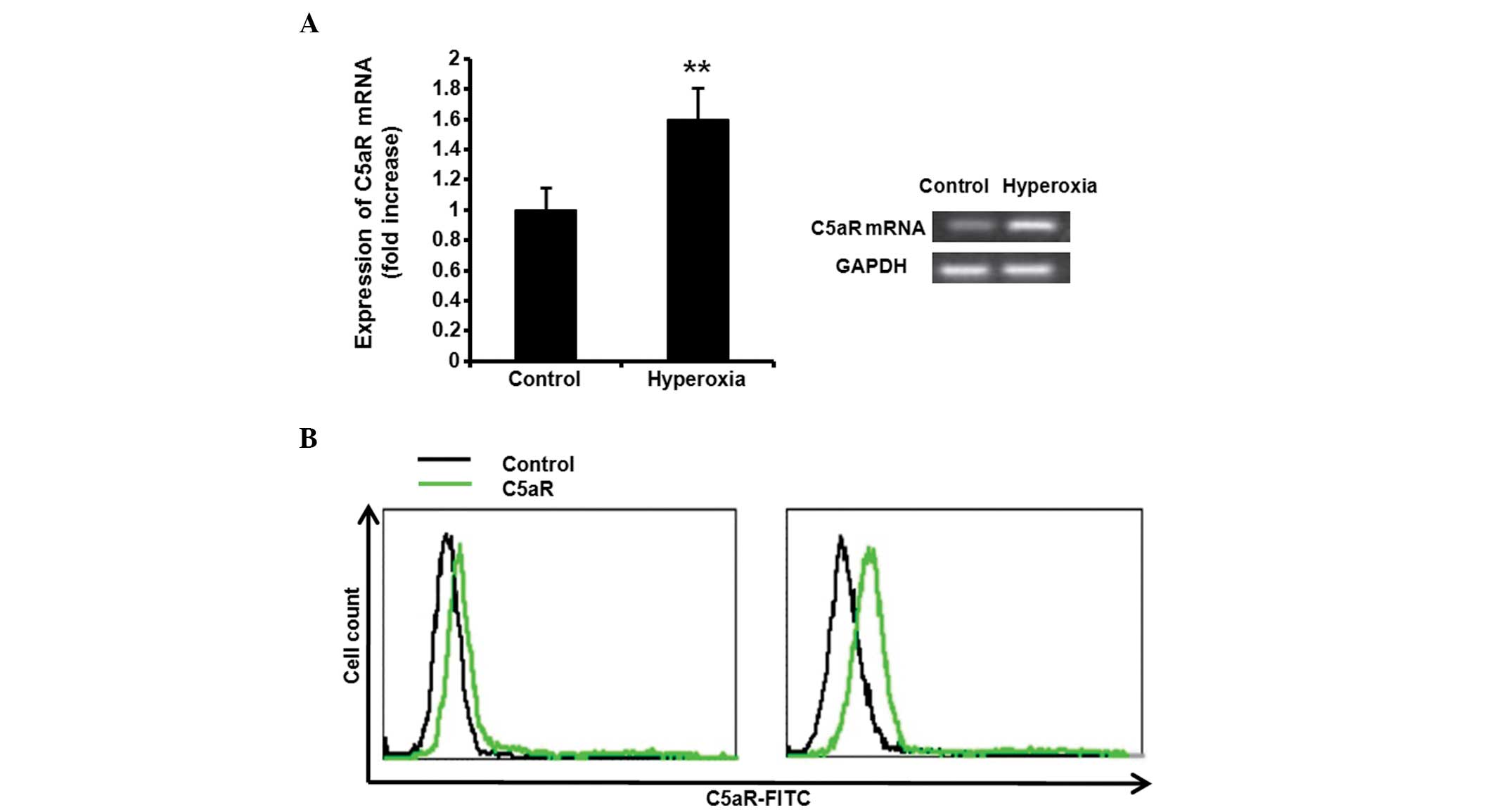Targeting complement anaphylatoxin C5a receptor in hyperoxic lung injury in mice
- Authors:
- Published online on: July 18, 2014 https://doi.org/10.3892/mmr.2014.2394
- Pages: 1786-1792
-
Copyright: © Xu et al. This is an open access article distributed under the terms of Creative Commons Attribution License [CC BY_NC 3.0].
Metrics:
Total
Views: 0 (Spandidos Publications: | PMC Statistics:
)
Total PDF Downloads: 0 (Spandidos Publications: | PMC Statistics:
)
Abstract
Receptor binding of complement anaphylatoxin C5a results in proinflammatory activation of numerous diseases, but the role of receptor-mediated action during hyperoxic lung injury has, to the best of our knowledge, not yet been investigated. The contribution of the C5a receptor (C5aR) to hyperoxic lung injury in mice was investigated in this study. The effect of C5aR on hyperoxic lung injury in Balb/c mice was examined employing a C5aR antagonist (C5aRA). The mice were ventilated with 100% oxygen for 36 h with or without the administration of C5aRA. C5aR expression levels in non‑treated or 100% oxygen‑treated mice were assessed by reverse transcription polymerase chain reaction (RT-PCR) and flow cytometry. The body weight and the relative lung weight of the mice, and the morphological changes in the lung were then determined. The total cell counts and the number of macrophages, neutrophils and lymphocytes in bronchoalveolar lavage fluid (BALF) were determined using cytocentrifuge slides and a hemocytometer. The levels of interleukin-6 (IL-6), monocyte chemotactic protein (MCP-1) and tumor necrosis factor-α (TNF-α) in BALF and the myeloperoxidase (MPO) activity in the lung tissue were measured by enzyme-linked immunosorbent assay. The relative levels of CD68 and F4/80 messenger ribonucleic acid (mRNA) expression in the lung tissue were detected by RT-PCR. The TNF-α, IL-6 and MCP-1 protein expression levels in the lung tissue were assessed by western blot analysis. The results revealed hyperoxia-induced morphological changes, lung injury and increased expression levels of C5aR in lung tissue. The hyperoxia‑induced increases in the total cell count and the number of macrophages, neutrophils and lymphocytes in the BALF were all significantly reduced in the mice receiving C5aRA. Treatment with C5aRA also attenuated the morphological changes and reduced MPO activity, and CD68 and F4/80 mRNA expression levels in the lung tissue, as well as the levels of IL-6, MCP-1 and TNF-α in BALF and lung tissue. In conclusion, C5a-C5aR action accelerated hyperoxia-induced lung injury, but this hyperoxic lung injury was attenuated by treatment with C5aRA.

















